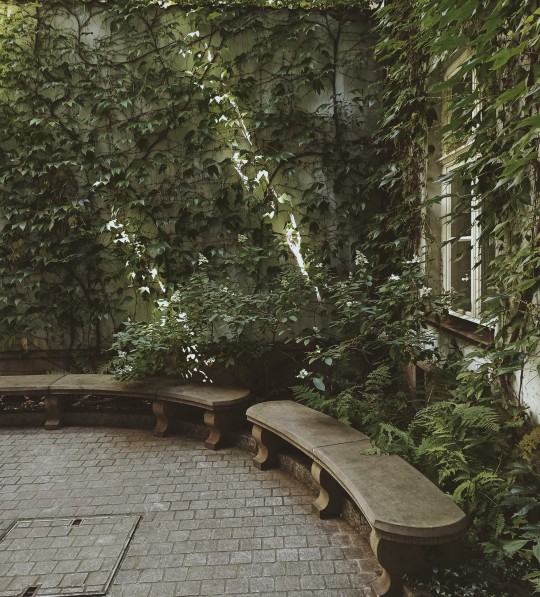Text
Cooling botanicals to befriend this summer - recipes, rituals, infusions and concoctions.
I don’t know about you but I dislike summer. Where I am based, winter is painfully short and the joys that come with are fleeting - the beautiful veggies, the heavy meals, that natural flush. And summer rules over these western skies, dry, hot, arid and uncomfortable. But here is a list of easy-to-source plants that will help you sail comfortable through this heat wave that is the Indian summer- to cool down your body, deal with heat, rashes, eczema, etc. (Emphasis on easy-to-source...because we read online endlessly about plants and herbs that aren’t available everywhere. For example, Juniper trees do not grow in Gujarat and Cinnamon cannot grow in Jammu Kashmir, but that’s the beauty of nature - you will find a local equivalent of the plant / herb you are looking for, with the same / similar benefits, which, in any case, will be more than enough.)
But before you read on, I want to warn you. Working with plants is different for everyone. This is not medicine and these aren’t remedies. It’s more of a lifestyle. And all of these recipes on this list and on this blog work and will work if you really and truly believe in the magic healing of plants and herbs.
1. Fennel - Fennel can grow almost anywhere in the world. In fact, you can easily grow it at home. It is beautiful, cooling and sweet, like liquorice. Fennel has minerals such as selenium and zinc which cools down your body, aids digestion and also regulates blood pressure, along with many many other benefits. The ideal way to consume fennel, while keeping its properties intact, is to steep it. Heating it or cooking it will destroy the nutritional benefits of this spice. What I ideally like to do is steep it in warm water to make a gentle tea and drink it. Once can also eat it raw in a salad or as it is.

2. Hibiscus - Hibiscus is a beautiful flowering tree with multiple benefits. Popularly known as a hair treatment, and also used in our Bringharaj and Hibiscus hair oil, which is a gorgeous red-coloured oil which treats dandruff and dry scalps beautifully (https://junipero.in/products/hibiscus-bringharaj) , hibiscus makes for a very refreshing cooling iced tea. I steep fresh hibiscus flowers without the stalk and the yellow crumbly stamen in warm water and I then let it cool down. Hibiscus tea can be consumed hot or cold and has a tart taste similar to that of cranberries. For this reason, it is often sweetened with honey or flavoured with a squeeze of lime juice to balance the tartness, which I also prefer doing.

3. Chamomile - Chamomile grows in Northern India, in the lower Himalayas and Punjab regions also known as Babuna in Hindi. But for this remedy, all of you who aren’t lucky enough to be living in the mountains, all you need is a Chamomile tea-bag or two. Your Lipton / Vahdam will do just fine. Steep this in a tub of bathwater and take a good-intentioned bath with it. This will cool your body down and also treat any burns, rashes, heat on our skin.

4. Bael - Bael is a widely used well-known fruit in Indian households, also known as Billi / Stone Apple / Bengal Quince / Wood Apple / Golden Apple. Two words: Bael Juice (Mom, I’m looking at you). Bael juice / sherbet is a natural drink extracted from the pulp of the fruit. When made with ripe fruits, the juice gets a deep yellowish-orange colour with a sweet taste. It contains tannins, flavonoids, and coumarins, which reduce inflammation MAJORLY. Drink thrice a week, not too frequently, as it also has a laxative effect on the body.

5. Aloe Vera - Please do not buy Patanjali aloe vera or any jar of aloe vera that is bright electric green in colour. Please don’t buy aloe vera at all - grow it!!!! I cannot stress on this enough - if you can grow any of these herbs / plants / flowers - please do. I’m working on a home apothecary and Aloe Vera was the very first plant I invested in - easy and quick to grow with numerous benefits. You can slice it open and scrape off the gel and use it on your face, body and hair as it is for rashes, eczema or even add it to face masks and hair masks. One can also consume aloe vera in smoothies or even it’s juice for internal cooling. I use the gel, crushed to a mulch, in my hair once every two weeks to hydrate my scalp and roots.

0 notes
Photo

Creative Home Design, Metro Books, 1999 📚
Salvaged & scanned by @jpegfantasy 🖨️
13K notes
·
View notes
Text

"...and then, I have nature and art and poetry, and if that is not enough, what is enough?"
~Vincent Willem van Gogh
6K notes
·
View notes
